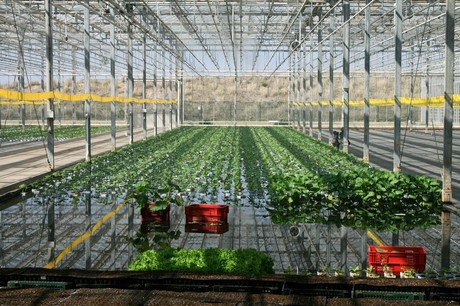Greenhouse sensors are critical components of your indoor grow monitoring systems. Sensors continually measure specific conditions within a particular location and report that data to the system.
As agricultural technology changes the way farmers grow, it's essential to stay informed on the latest advances in technology to increase crop yields and prevent disease.

Here are six reasons you should have smart sensors in your greenhouse:
- Moisture Detection - Knowing when to water and how much is a crucial component in the success of your grow operation. Smart sensors can calculate precisely how much and how often to water your crop to avoid root rot and other issues with over or under watering your plants.
- Control Access - Smart sensors can be installed on key access points of your growing operation, giving you 24/7 monitoring of who is accessing key locations. Placing sensors on windows, doors, supply rooms, and other essential areas can alert you when different areas are being accessed and allow you to monitor unauthorized access.
- Monitoring Equipment - The modern, smart farm requires many types of equipment to run optimally. Using sensors on irrigation, misting, and fertilizer systems will monitor the performance of pumps and pressure lines, allowing you to stay up to date on the system's efficiency. They can also be placed on vents, fans, and vented roofs to be alerted if they stop working or operate outside of predetermined parameters.
- CO2 levels - Carbon dioxide is essential to the process of photosynthesis. Most indoor plants grown require a minimum CO2 concentration of 330 ppm to enable them to photosynthesize efficiently. Mounted sensors in your grow operation will monitor CO2 levels and alert you when levels dip below the predetermined amount so you can adjust accordingly.
- Monitor power supply - Smart farms require plenty of power for critical equipment like fans, heaters, lighting, sprinklers, humidifiers, etc. Sensors can alert you to power outages that may impact your operation.
- Water pH levels - Placing sensors into plumbing systems will monitor the pH levels in real-time. This can prevent nutrient deficiencies that can occur when water is over or under acidic, eliminating the need to test water samples using alternative methods.
Most systems provide real-time status of all monitored conditions through a cloud-based system. This offers immediate access to sensor data from any internet-connected device, such as a tablet or phone.
For more information: Growlink
Growlink
875 Kalamath
Denver, CO 80204
+800-432-0160
info@growlink.com
growlink.com
